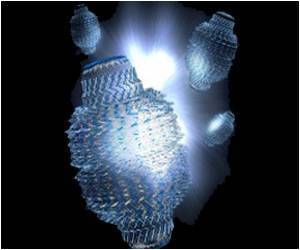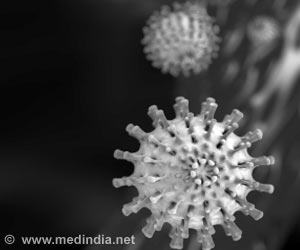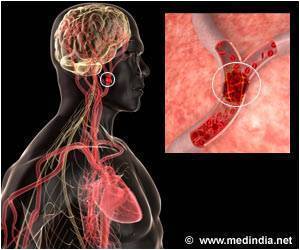The drug-delivery technique may enhance the effectiveness of the drugs being delivered, can be produced in bulk, and appears to be wholly biodegradable.

‘The 'Nano-terminator' drug-delivery technique may enhance the effectiveness of the cancer drugs being delivered, can help doctors locate tumors, can be produced in bulk, and appears to be biodegradable with very low toxicity.’





The study is published in Nature Communications.To create the nano-terminators, researchers place the bulk liquid metal (gallium indium alloy) into a solution that contains two types of molecules called polymeric ligands. The solution is then hit with ultrasound, which forces the liquid metal to burst into nanoscale droplets approximately 100 nanometers in diameter. The ligands in the solution attach to the surface of the droplets as they break away from the bulk liquid metal. Meanwhile, an oxidized 'skin' forms on the surface of the nanodroplets. The oxidized skin, together with the ligands, prevents the nanodroplets from fusing back together.
The anticancer drug doxorubicin (Dox) is then introduced into the solution. One of the ligands on the nanodroplet sucks up the Dox and holds on to it. These drug-laden nanodroplets can then be separated from the solution and introduced into the bloodstream.
The second type of ligand on the nanodroplets effectively seeks out cancer cells, causing receptors on the surface of the cancer cell to latch on to the nanodroplets. The cancer cell then absorbs the nanodroplets.
Once absorbed, the higher level of acidity inside the cancer cell dissolves the oxidized skin of the nanodroplets. This releases the ligands, which will go on to release the Dox inside the cell.
Advertisement
Meanwhile, the liquid metal continues reacting with the acidic environment in the cancer cell and dissolves, releasing gallium ions. Interestingly, these gallium ions enhance the performance of anticancer drugs - including their effectiveness against drug-resistant cell lines.
Advertisement
Yue Lu, a student in Gu's lab, said, "Based on in vitro tests, we believe the liquid metal degrades completely in a matter of days into a form that the body can successfully absorb or filter out, without notable toxic effects."
The researchers have tested the liquid metal technique in a mouse model, and found that it is significantly more effective than Dox alone at inhibiting the growth of ovarian cancer tumors. Importantly, the researchers tracked the mice for up to 90 days, and found no signs of toxicity related to the liquid metal.
Gu said, "This was a proof-of-concept study, but very encouraging. Like the fictional Terminator, this carrier is transformable: smashed from bulk material, fused inside cancer cells and eventually degraded and cleared. We are hoping to do additional testing in a large animal study to get closer to potential clinical trials."
Source-Eurekalert















